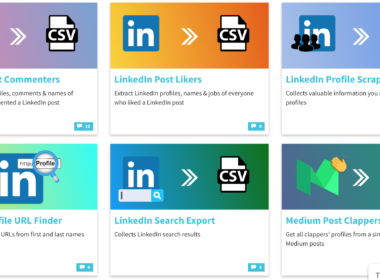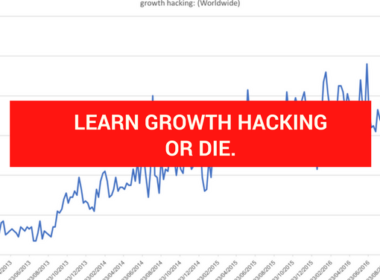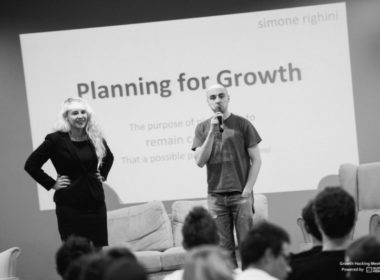What Full-Funnel Optimisation Actually Means
The main difference between Growth Marketing and Digital Marketing lays in the obsession growth marketers have for the optimisation of the customer experience all along the full customer journey.
Growth hackers use the AAARRR framework to describe and optimise each step of the conversion funnel towards a full customer journey. This is always done with regards to one key metric at a time. Think of your business as a bucket and your leads as water. If you start pouring down water into a leaky bucket, you’ll waste a lot of money. This is why growth teams care deeply about customer retention.
Remember the good old 4P’s in marketing? Product is one them. The challenge faced by marketers when promoting digital products is that they are losing control over the product experience. Indeed, after leads land on the landing page (awareness) and sign up (acquisition), the rest of the customer experience is usually handed over to the product team. Developers and designers are in charge of ensuring that users have a great first experience (activation), keep coming back (retention) and eventually pay to use the product (revenue). The last step — referral — is usually underrated and often solely consists in organic word-of-mouth whereas it is key to create viral loops and increase the customer lifetime value (CLV).
The solution is not to give the power back to marketers but to involve them in the product development and optimisation phases. That’s why the growth methodology revolution the silo’s kind of organisation by implementing growth teams. Growth teams are composed of technical marketers, UX/UI designers, full stack developers and data analysts. Together, they analyse the entire customer journey to identify bottlenecks in the conversion funnel. Then, they run data-driven experiments using the scrum methodology to improve a set of predefined key business metric(s). In order to achieve long-term sustainable growth, such teams focus on delivering delightful and personalized experiences at scale.
Digital marketers are being replaced by data-driven — technical — marketers who dive deep into business’ analytics to find the holes in the funnel and test different creative solutions to find a predictable, repeatable and scalable growth process .
CASE — FORMYFIT
Formyfit is a mobile application that helps users achieve their running goals by providing them with a customised training plan based on personal information and an endurance test.
After analysing data, we found that Formyfit’s biggest bottleneck in the customer journey was activation. Activation is when users have a great first experience with the app and hit the WoW Moment. In this case, data showed that users having completed their endurance test were much more likely to become active users than the others.. Indeed, after taking the endurance test, users get their customised training plan and understand how Formyfit differs from other running apps.
1. ACTIVATION — DELIVER A SUCCESSFUL FIRST EXPERIENCE
Yet, we found that only 5% of users finishing the onboarding were completing that key step. As a consequence, activation became our primary focus. To better understand why users failed to complete the test, we interviewed customers and sent qualitative surveys. The answer became obvious: Formyfit was asking users to take the endurance test right after the onboarding and therefore also right after downloading the app. But, who is ready for a run when they download a new app? Users were probably in the tube, on their coach or… you know.
So, we changed the onboarding and set it up to ask users when they would be willing to take their endurance test.
Then, we ran events-based retargeting through email and Facebook to motivate them and remind them of the date.
BOOOM! Huge increase in activation rate, so we moved to awareness and acquisition. Remember: you should always improve the full funnel — or the full customer journey — one metric at a time.
2. AWARENESS — DRIVE TRAFFIC AND BRAND RECOGNITION
After running many tests using different channels, visuals and copywriting, we found our winning Facebook ads. The key was to target major running races across the world and adapt the copy, visuals and audiences accordingly. Racers were using the app to get a personal coach for a tenth of the normal price and kept using it after the race.
3. ACQUISITION — IDENTIFY LEADS AND START THE CONVERSATION
Acquisition is the first — non-financial — transaction between a lead and a brand. In the acquisition phase, the lead agrees to give away some personal information — together with the right to be contacted — in exchange for value such as a high-value piece of content.
We strongly believe that the first customer touchpoint should always be about giving value. This is why we created a whitebook of the 10 best tips to train for a half marathon. Not only did we create trust by giving away relevant content for free, but we also collected data from qualified leads.
The key here is to build systems as shown in the visual, not campaigns. Once the system is in place, it can be replicated for the 5 km, 10km and marathon.
4. RETENTION — CREATE A HABIT
As Nir Eyal brilliantly explained in his book Hooked, if you want to improve your product retention, you have to create a habit.
External triggers must be linked to internal triggers, which usually take the form of negative emotions. In this case, ‘feeling fat and unhealthy’. As people experience that feeling more often it creates an opportunity for you to send external triggers in the form of push notifications and emails in order to get users back to the app.
Another way to increase retention is using the tactics engineered by the gaming industry, a process called ‘gamification’. By following their program, users of Formyfit are rewarded with ‘fits’. After a certain amount of fits, they unlock badges such as runner or athlete.
5. REVENUE — DECREASE YOUR CAC AND INCREASE YOUR CLV
Obviously, Revenue is a key stage of the customer journey. At this stage, users go through the checkout process and are later incentivised to buy a more advanced version of the product (up-selling) or other relevant products (cross-selling).
It usually comes down to nailing the pricing strategy, reviewing the UX of the checkout process (example above), making sure you have your customers’ favourite payment methods available and understanding when users are psychologically ready to buy.
6. REFERRAL — TURN LOYAL CUSTOMERS INTO AMBASSADORS
The goal of this stage is to get happy customers to recommend the product to others so that you create viral loops, increase the CLV of these customers and can afford higher CAC to reach out to new audiences.
In the mobile app industry, it’s crucial to have ‘Ratings & Reviews’ score located between 4 to 4.8 out of 5. Below 4 or above 4.8, people won’t trust you.
The key here is to understand when to ask for recommendations. After lots of testing and experimentation, we identified that the perfect moment was after the endurance test and 3 runs. The logical explanation is that users were unlocking their first badge and already experiencing improvements at this stage.
RESULTS
Without a full funnel understanding of the customer journey, we would never have seen the huge bottleneck in the activation phase and we would have wasted a lot of money in advertising. The cost of customer acquisition would have been ten times higher than the customer lifetime value and the business wounld never have been viable.
You can only achieve growth by optimising and automating the full customer journey, one metric at a time.
Need help to grow your business? Join our Growth Hacking Workshop!




Growth Hacking vs. Digital Marketing: 5 Key Differences - MAD Kings
[…] it comes to full-funnel strategy, digital marketing is part of growth […]